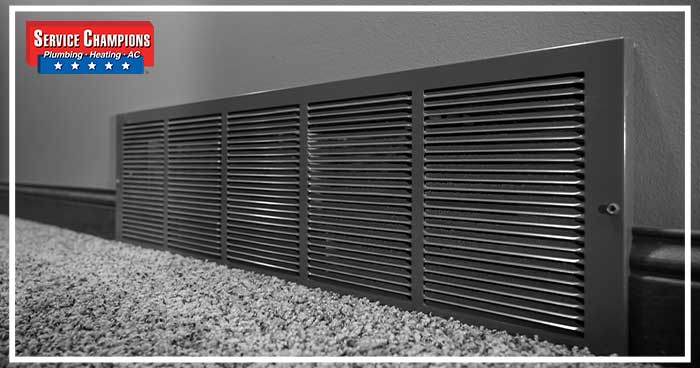What is Really Included with a Furnace Tune-Up
We talk a lot about the importance of an annual furnace tune-up. However, we haven’t told you exactly what our technicians check while performing a tune-up. Today, we’re going step-by-step through the furnace tune-up process, explaining why our techs inspect or test a specific part and why, and what’s really included with a furnace tune-up.
There are 3 main parts of our signature 18-point furnace tune-up: inspection, cleaning, and testing and measuring. During a tune-up, our expert techs will review every part of your HVAC system to ensure the safety of the unit and your home. After everything is said and done, they’ll let you know if any parts need to be repaired or replaced, as well as provide you with an overall system evaluation.
#1 Furnace Inspection:
Heat Exchanger
- The heat exchanger is an integral part of any furnace. It passes heat between two or more fluids or gasses. Think natural gas and ambient air. The heat exchanger has two holes, one at the bottom and one at the top. A burner will generate combustion gas and send that into the first hole. While this is happening, outdoor air will be pulled over the top of the heat exchanger. The combustion gas inside the heat exchanger will warm the outdoor air and send that heated air through your home.
The heat exchanger then pushes the harmful gasses through the other hole. Once the gasses exit that hole, they go through a flue and are released outside of the house. Essentially, the heat exchanger makes sure nothing like gas makes it into your home.
One of the key steps of a tune-up is that our HVAC techs will inspect your heat exchanger. They make sure it’s safely transferring gasses. A heat exchanger can have small hairline cracks and safely do its job. However, it’s a tech’s responsibility to let you know the condition of the heat exchanger and if any cracks could lead to an unsafe working condition.
- The heat exchanger is an integral part of any furnace. It passes heat between two or more fluids or gasses. Think natural gas and ambient air. The heat exchanger has two holes, one at the bottom and one at the top. A burner will generate combustion gas and send that into the first hole. While this is happening, outdoor air will be pulled over the top of the heat exchanger. The combustion gas inside the heat exchanger will warm the outdoor air and send that heated air through your home.
Duct Supply and Return
- Duct supply and returns are one of the first things a Service Champions tech will inspect in your home. They will first ask you to turn on your thermostat and then wait for the HVAC system to boot up and start circulating air.
 We will then take a temperature reading at each supply and return vent to make sure the proper temperatures are coming from each vent.
We will then take a temperature reading at each supply and return vent to make sure the proper temperatures are coming from each vent.
- Duct supply and returns are one of the first things a Service Champions tech will inspect in your home. They will first ask you to turn on your thermostat and then wait for the HVAC system to boot up and start circulating air.
Combustible Material Around the Furnace
- Furnaces are normally placed in areas that have a lot of storage. We usually see them in attics, basements, and utility closets. We think these are great areas for a furnace; they’re out of the way, but still protect your system from any outdoor elements. However, just like almost everything else in this world, your furnace needs to breathe.

We recommend leaving at least 3 feet between your furnace and any boxes or storage items. Many homeowners tend to store things like holiday decorations around their furnace. Storing things too close to your furnace doesn’t allow your system to have the proper ventilation it needs. This could result in a premature failure of your furnace. A Service Champions technician will make sure everything is moved away from the furnace, and let you know if items are too close.
- Furnaces are normally placed in areas that have a lot of storage. We usually see them in attics, basements, and utility closets. We think these are great areas for a furnace; they’re out of the way, but still protect your system from any outdoor elements. However, just like almost everything else in this world, your furnace needs to breathe.
#2 Cleaning the Furnace:
Furnace Exterior
- When we get to your furnace, we’ll check for any dust, debris, or other accumulation on the exterior of the unit. Each of our techs have a vacuum with them to clean your furnace and restore it as best as possible to factory-level cleanliness.

- When we get to your furnace, we’ll check for any dust, debris, or other accumulation on the exterior of the unit. Each of our techs have a vacuum with them to clean your furnace and restore it as best as possible to factory-level cleanliness.
Burner Compartment
- The burner compartment is where the magic truly happens. This section of the furnace allows gas to mix freely with air, which creates the warm air that heats your home.

While checking the burner compartment, we will take out the most of the components and thoroughly clean it. Modern burner compartments are packed with safety features that can be triggered by something as small as a spider web. This is the biggest reason why we meticulously clean them. We want our clients to know all their burners are safely working with not so much as a web in the way.
- The burner compartment is where the magic truly happens. This section of the furnace allows gas to mix freely with air, which creates the warm air that heats your home.
Filter Standard 1” (wash or replace)
- Taking care of your air filter is one of the best things you can do for your HVAC system. During a furnace tune-up we will change or wash your filter depending on what type you have. The standard filter we supply our techs with is a washable 1” filter. They will take out the filter, wash it, wait for it to completely dry, and put it back in.
 We’re also here to help if you have a specialized air filter you want to use. If you have a HEPA, media, or truly any other type of filter, give it to the tech before they start your tune-up. This guarantees your chosen filter will make it in the system and will be properly installed.
We’re also here to help if you have a specialized air filter you want to use. If you have a HEPA, media, or truly any other type of filter, give it to the tech before they start your tune-up. This guarantees your chosen filter will make it in the system and will be properly installed.
- Taking care of your air filter is one of the best things you can do for your HVAC system. During a furnace tune-up we will change or wash your filter depending on what type you have. The standard filter we supply our techs with is a washable 1” filter. They will take out the filter, wash it, wait for it to completely dry, and put it back in.
Blower Assembly
- Without the blower motor, no air could circulate through your home. When treated air is warmed and ready to go, the blower motor will push everything through the filter and into the ductwork, eventually dispersing it all over your home.

Our techs will physically remove the entire blower assembly from your unit. They will then take it outside and clean it with a hose. We do this because over time, even with a high-quality air filter, fine dust particles can settle on the blower wheel and cause it to go out of balance and cause noises or eventual damage.A standard HVAC unit can move up to 9,000 pounds of air per hour. That air, especially if the unit is in an attic, has a lot of dust in it. A blower wheel that’s out of balance will send all that dust—some of it too fine to be caught by almost any air filter—back into your home. This is why we take so much time and care with the blower assembly.
- Without the blower motor, no air could circulate through your home. When treated air is warmed and ready to go, the blower motor will push everything through the filter and into the ductwork, eventually dispersing it all over your home.
#3 Test and Measure:
Electrical Wiring
- Constant movement and vibration can cause the electric wiring in your HVAC system to come loose or be knocked out of place. Because of this, our techs go in and check all wiring in your unit.

We want to make sure all the electrical connections are all in good working order. If we come across anything that needs a fix, we do it on the spot. A loose connection can create resistance, which converts to heat, which converts to unsafe operation in the long term.
- Constant movement and vibration can cause the electric wiring in your HVAC system to come loose or be knocked out of place. Because of this, our techs go in and check all wiring in your unit.
Carbon Monoxide
- Testing for carbon monoxide happens at almost every stage of the tune-up process. Our techs are equipped with calibrated carbon monoxide detectors that are very sensitive. We make sure there is no carbon monoxide coming into your home. There is no such thing as a “safe” amount of carbon monoxide.

- Testing for carbon monoxide happens at almost every stage of the tune-up process. Our techs are equipped with calibrated carbon monoxide detectors that are very sensitive. We make sure there is no carbon monoxide coming into your home. There is no such thing as a “safe” amount of carbon monoxide.
Thermostat Evaluation
- After we introduce ourselves to the client, the absolute first thing we do is check the thermostat settings. Generally, a tech will start by asking you to turn on the thermostat so we can start taking the vitals of your HVAC system. One issue we’ve seen is that the thermostat could be hung in the wrong place. Causing it to not up a proper temperature reading. Then telling the system the entire home is set to that improper reading which leads to an unpleasant and uneven ambient home temperature.

- After we introduce ourselves to the client, the absolute first thing we do is check the thermostat settings. Generally, a tech will start by asking you to turn on the thermostat so we can start taking the vitals of your HVAC system. One issue we’ve seen is that the thermostat could be hung in the wrong place. Causing it to not up a proper temperature reading. Then telling the system the entire home is set to that improper reading which leads to an unpleasant and uneven ambient home temperature.
Exhaust System Venting
- All central heating systems make exhaust. That exhaust needs to go somewhere so we check if it is properly ventilated with a flue pipe. We’ve often found that homeowners and other contractors don’t know what a flue pipe is and disconnect it during renovations. Sometimes they mistakenly think it’s a bathroom exhaust.
 During tune-ups for first time customers, we’ll see a lot of collapsed flue pipes. This wouldn’t be a big deal if all the ducting is sealed. However, about 50-60% of ducting has very small leaks that could let these harmful gasses into a home’s air supply.
During tune-ups for first time customers, we’ll see a lot of collapsed flue pipes. This wouldn’t be a big deal if all the ducting is sealed. However, about 50-60% of ducting has very small leaks that could let these harmful gasses into a home’s air supply.
- All central heating systems make exhaust. That exhaust needs to go somewhere so we check if it is properly ventilated with a flue pipe. We’ve often found that homeowners and other contractors don’t know what a flue pipe is and disconnect it during renovations. Sometimes they mistakenly think it’s a bathroom exhaust.
Ignition System Operation
- Pilot lights can create a lot of buildup. Over time, the buildup can grow so much that it affects how the system lights a flame. We like to make sure that area is clean, so it ignites every time.

- Pilot lights can create a lot of buildup. Over time, the buildup can grow so much that it affects how the system lights a flame. We like to make sure that area is clean, so it ignites every time.
Combustion Gas Leakage
- Gas leaks can lead to major problems. Our techs make sure to inspect every inch of the gas line when preforming a tune-up. They also check every fitting at the furnace and water heater to make as well. Your HVAC system will never alert you if there is a gas leak. That’s one of the many reasons it’s so important to schedule yearly maintenance on your furnace.

- Gas leaks can lead to major problems. Our techs make sure to inspect every inch of the gas line when preforming a tune-up. They also check every fitting at the furnace and water heater to make as well. Your HVAC system will never alert you if there is a gas leak. That’s one of the many reasons it’s so important to schedule yearly maintenance on your furnace.
Measure and Adjust Gas Pressure
- Along with gas leakage, we make sure to measure and adjust the gas pressure. Most furnaces are equipped with a water column. Through this column we evaluate the gas pressure by measuring the atmospheric pressure of this column.

For every unit, an engineer who designed this specific furnace will give it a numerical rating. If the gas pressure is above or below the assigned number ranking, our techs will adjust the line until it’s at an optimal pressure point.If a gas pressure line is not at its proper rating, it will overheat any metal in your system. Which could lead to premature furnace failure.
- Along with gas leakage, we make sure to measure and adjust the gas pressure. Most furnaces are equipped with a water column. Through this column we evaluate the gas pressure by measuring the atmospheric pressure of this column.
Secondary Motor Control Operation
- The secondary motor control operation keeps the furnace’s motor always moving at a controlled speed. If the secondary motor control is malfunctioning, the heater motor will move faster than it should. This could cause the whole system to overheat and even wear out the motor before its time is up.

- The secondary motor control operation keeps the furnace’s motor always moving at a controlled speed. If the secondary motor control is malfunctioning, the heater motor will move faster than it should. This could cause the whole system to overheat and even wear out the motor before its time is up.
Safety and Control Circuits Operation
- One thing that truly makes modern HVAC systems stand out are their safety features. Perhaps, the most important sensor is in the center of where the actual flames are. If something ever gets sucked into this area or the coil gets dirty, the whole system will shut down because the safety control found the machine to be operating under “unsafe” conditions.If a furnace can’t properly ignite, which could lead to a release of gas and other harmful contaminates, a safety sensor shuts everything down. Our techs like to call this little sensor a “lifesaver” because it could literally save your life.

- One thing that truly makes modern HVAC systems stand out are their safety features. Perhaps, the most important sensor is in the center of where the actual flames are. If something ever gets sucked into this area or the coil gets dirty, the whole system will shut down because the safety control found the machine to be operating under “unsafe” conditions.If a furnace can’t properly ignite, which could lead to a release of gas and other harmful contaminates, a safety sensor shuts everything down. Our techs like to call this little sensor a “lifesaver” because it could literally save your life.
Blower Motor Amperage and Voltage
- Your blower motor works directly with the blower assembly we talked about earlier. Because the blower assembly and motor are such important parts of the system, we take special care to make sure it’s running at peak efficiency.
 Every blower motor has a predesignated maximum amperage and voltage. Once the motor exceeds that maximum it’s time to replace the motor. If the motor is not functioning properly the system can create heat, but with a potentially unsafe operation. Homeowners can choose to replace the blower motor; this is how they can get ahead of replacing the entire unit.
Every blower motor has a predesignated maximum amperage and voltage. Once the motor exceeds that maximum it’s time to replace the motor. If the motor is not functioning properly the system can create heat, but with a potentially unsafe operation. Homeowners can choose to replace the blower motor; this is how they can get ahead of replacing the entire unit.
- Your blower motor works directly with the blower assembly we talked about earlier. Because the blower assembly and motor are such important parts of the system, we take special care to make sure it’s running at peak efficiency.
Temperature Difference at Supply and Return
- Testing the duct supply and blower motor is something we cover during the inspection phase as well as the test and measure phase. Our techs initially inspect the returns to make sure they are receiving and distributing air.

Another thing we need to do is make sure they are running at the proper temperature ratios. There should be a 30 – 60 degree temperature rise between the supply and return vent. If the return vent has a temperature that is 60 degree or higher than the supply vent, we know that’s a problem and can investigate it further.If we do see a large difference, one thing we will do to try and fix it is to check the gas pressure or fan speed. We want to make sure everything is at a proper temperature because if anything overheats, it’ll shorten the life of your system. We preform tune-ups to elongate the life of your furnace and AC.
- Testing the duct supply and blower motor is something we cover during the inspection phase as well as the test and measure phase. Our techs initially inspect the returns to make sure they are receiving and distributing air.
Ready to Schedule Your Own Thorough Furnace Tune-Up?
Simply call the number at the top of the screen or click here to book an appointment online. Our expert HVAC technicians are on hand and ready to make sure your system is in perfect working order. We are the only Diamond Certified HVAC and plumbing provider in Southern California. Service Champions proudly serves part of Los Angeles, Orange, Riverside, and San Bernardino counties.
You can take the work out of scheduling tune-ups by joining our CHAMP-Rewards program. When it’s time for your furnace and AC tune-up, our friendly Club Admins will call you to book a date and time. We also offer great perks and discounts to our CHAMP-Rewards members. Click here to learn more.
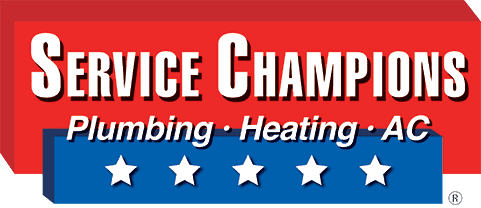
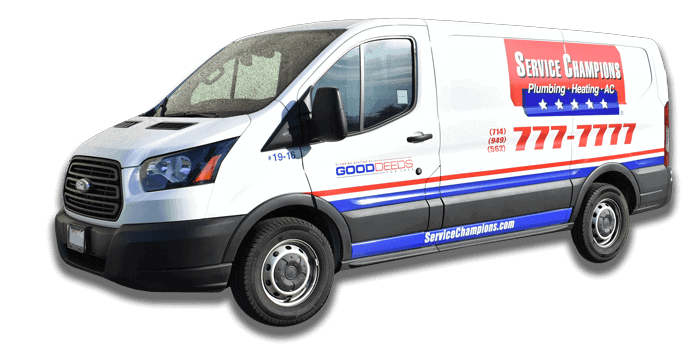
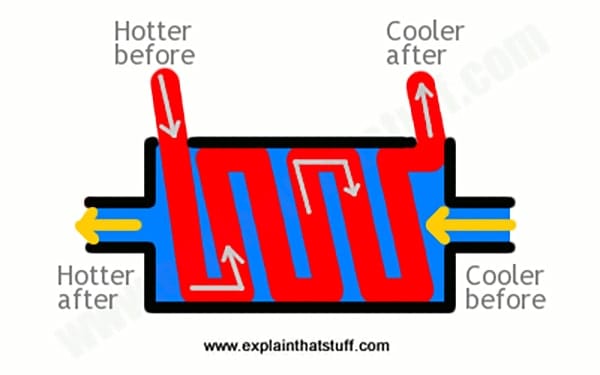
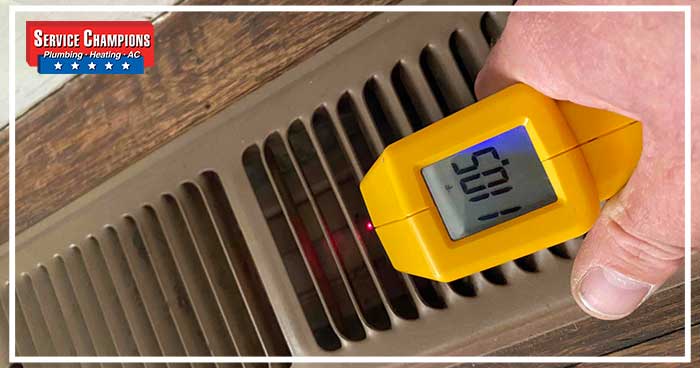 We will then take a temperature reading at each supply and return vent to make sure the proper temperatures are coming from each vent.
We will then take a temperature reading at each supply and return vent to make sure the proper temperatures are coming from each vent.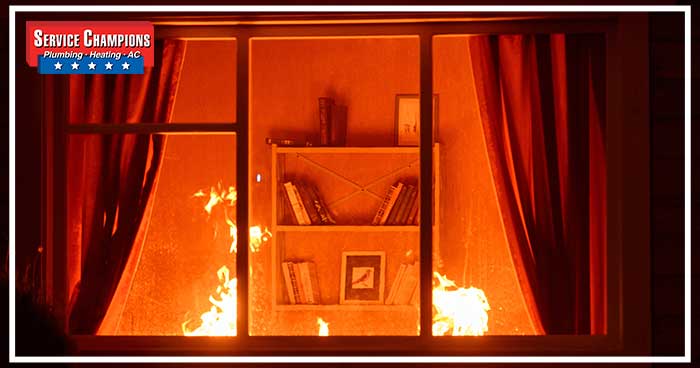
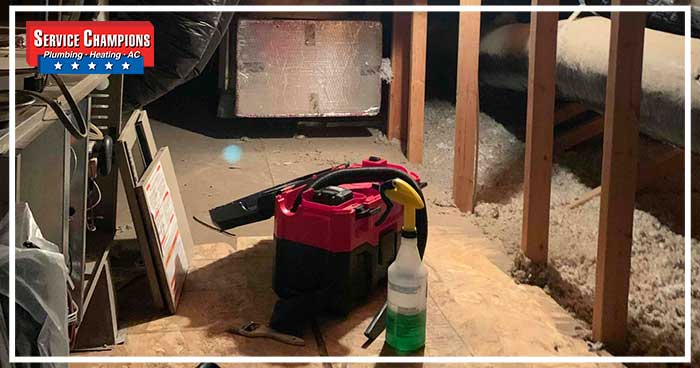
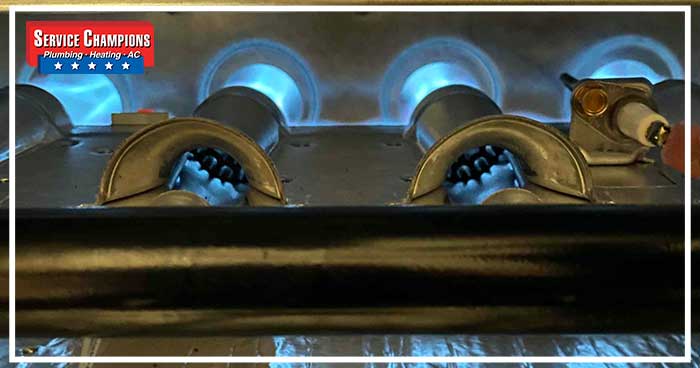
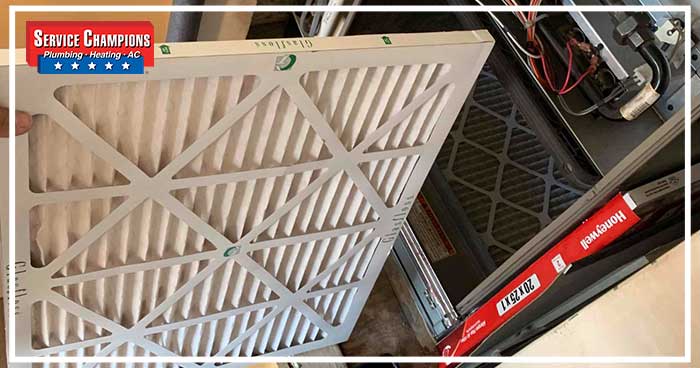 We’re also here to help if you have a
We’re also here to help if you have a 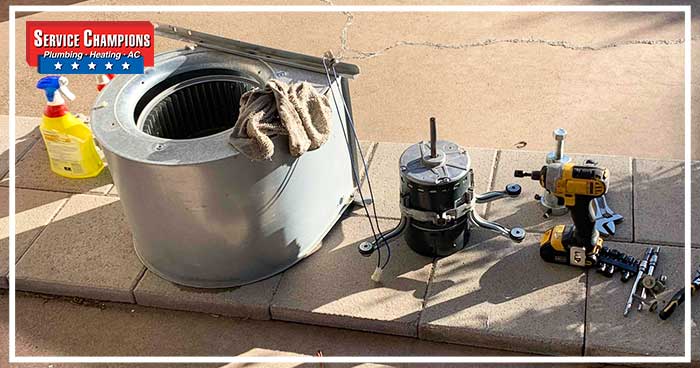
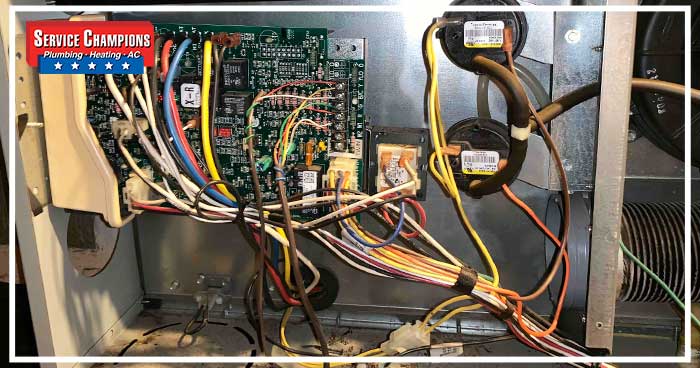
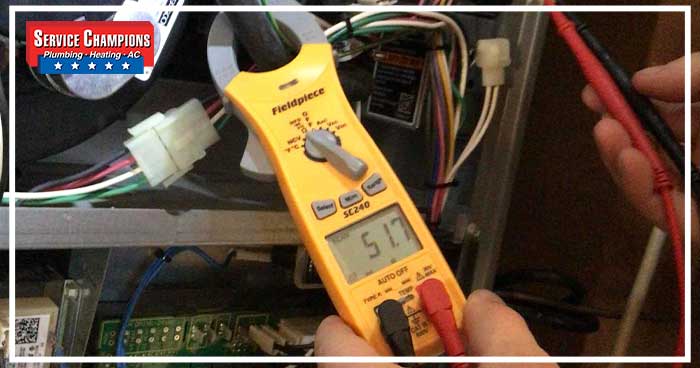
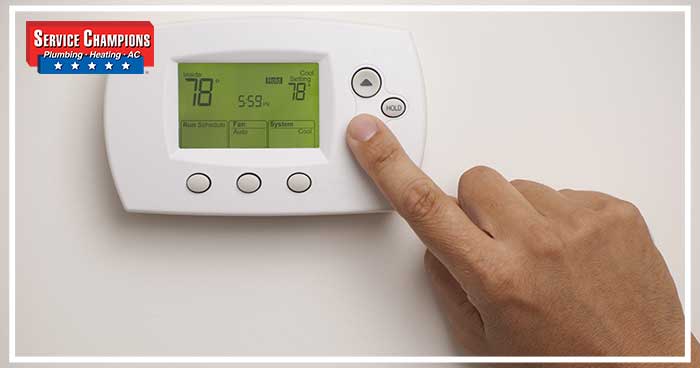
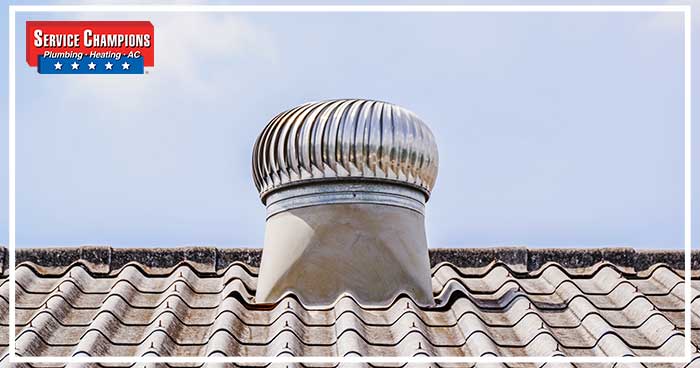 During tune-ups for first time customers, we’ll see a lot of collapsed flue pipes. This wouldn’t be a big deal if all the ducting is sealed. However, about
During tune-ups for first time customers, we’ll see a lot of collapsed flue pipes. This wouldn’t be a big deal if all the ducting is sealed. However, about 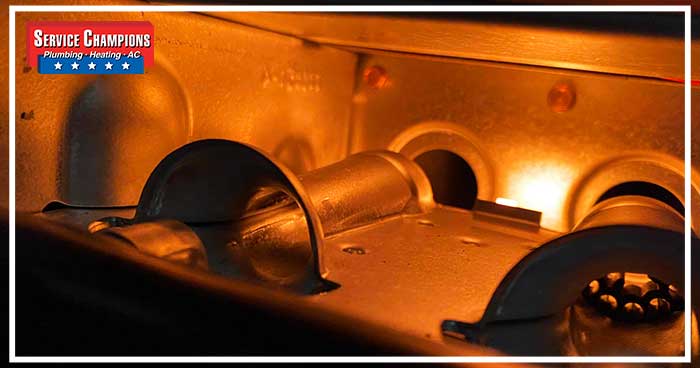
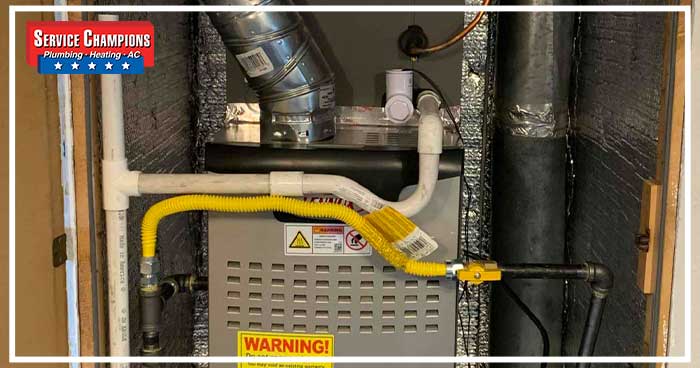
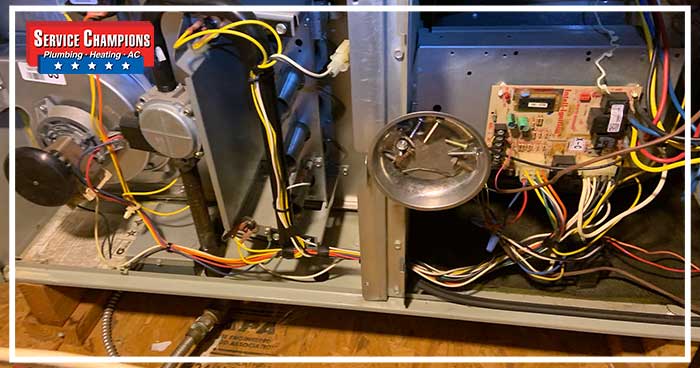
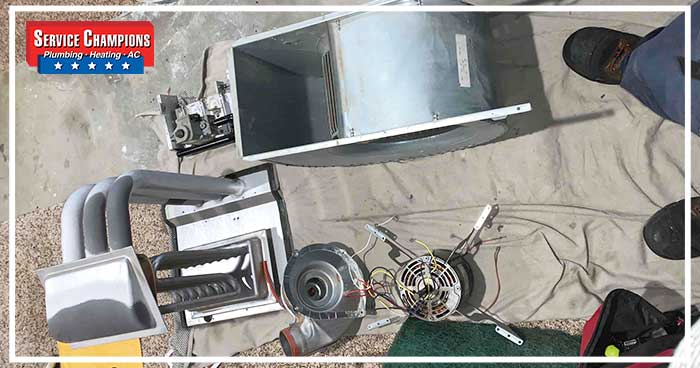
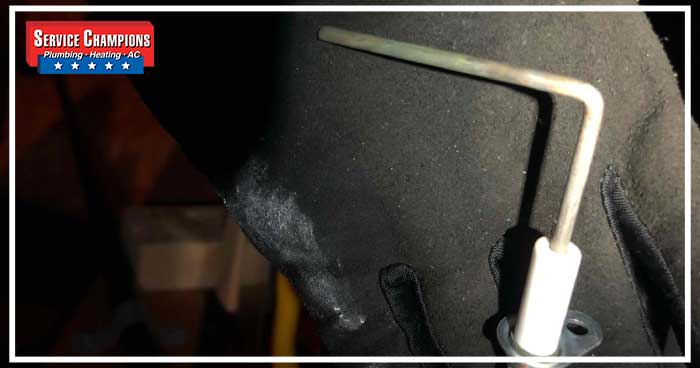
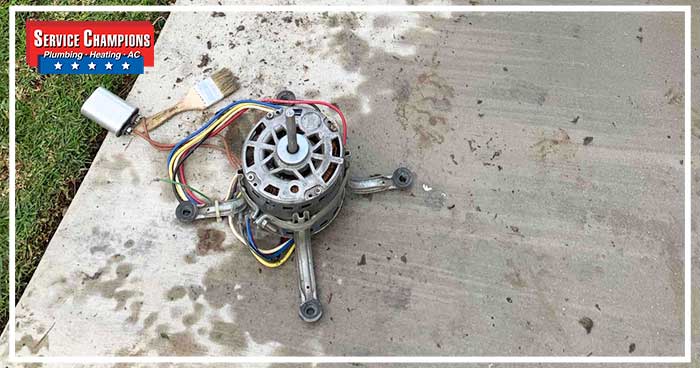 Every blower motor has a predesignated maximum amperage and voltage. Once the motor exceeds that maximum it’s time to replace the motor. If the motor is not functioning properly the system can create heat, but with a potentially unsafe operation. Homeowners can choose to replace the blower motor; this is how they can get ahead of replacing the entire unit.
Every blower motor has a predesignated maximum amperage and voltage. Once the motor exceeds that maximum it’s time to replace the motor. If the motor is not functioning properly the system can create heat, but with a potentially unsafe operation. Homeowners can choose to replace the blower motor; this is how they can get ahead of replacing the entire unit.